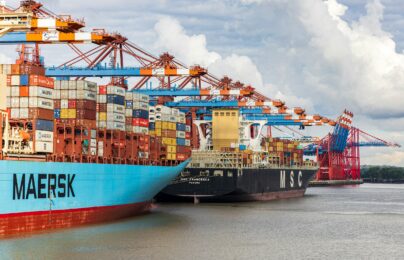
Pakistan seeks China’s help to restructure $15 billion energy debt amid financial crisis
- China has established 21 energy projects in Pakistan with a total investment of $21 billion.
- Debt restructuring could save $550-$750 million annually.
- IMF deal remains pending amid rising economic challenges.
Pakistan’s financial crisis has deepened, prompting the nation to turn to its ally China to restructure its $15 billion (£11.5 billion) energy debt. This move aims to alleviate the financial burden and provide fiscal space for the cash-strapped country.
Debt restructuring request
Copy link to sectionPlanning Minister Ahsan Iqbal and Finance Minister Muhammad Aurangzeb are scheduled to visit China this week to present a formal request for debt restructuring.
While Iqbal’s visit was pre-planned to attend the Global Development Initiative forum in China from July 11 to 13, Aurangzeb is being sent as a special messenger by Prime Minister Shehbaz Sharif.
This visit underscores the urgency of addressing the issue of Chinese Independent Power Producers’ (IPP) debt, which Pakistan seeks to re-profile.
Sources indicate that the finance minister will carry a letter from Prime Minister Sharif requesting debt restructuring.
During his recent visit to China, Prime Minister Sharif personally requested President Xi Jinping to consider re-profiling the IPPs’ debt and converting the imported-coal-fired power plants to local coal.
Financial impact and proposals
Copy link to sectionThe delegation will formally convey Pakistan’s request to convert Chinese-imported coal-fired power plants to local coal.
There is a proposal for the government to help Chinese investors secure loans from local banks for this conversion. Habib Bank Limited (HBL) is reportedly involved in facilitating this process.
China has established 21 energy projects in Pakistan with a total investment of $21 billion (£16.1 billion), including $5 billion (£3.8 billion) in equity.
The remaining Chinese energy debt of over $15 billion (£11.5 billion) will result in payments of $16.6 billion (£12.7 billion) by 2040.
The proposal involves extending debt repayments from 10 to 15 years, reducing the outflow of foreign currency by about $550 million to $750 million (£420 million to £575 million) annually, and decreasing electricity prices by Rs 3 per unit.
However, the extended repayment period will also increase the total payment to China by an additional $1.3 billion (£1 billion).
Economic challenges and IMF deal
Copy link to sectionPakistan faces severe economic challenges, with the government struggling to conclude a deal with the International Monetary Fund (IMF) or reduce electricity prices.
To secure the IMF deal, the government imposed record taxes of Rs 1.7 trillion on Pakistan’s lower, middle, and upper-middle-income groups.
Electricity prices were approved to increase by 14 percent to 51 percent, aiming to collect another Rs 580 billion from residential and commercial consumers.
Despite these measures, the Ministry of Finance has not yet secured a firm date for the staff-level agreement with the IMF.
Finance Minister Aurangzeb, a former banker, remains hopeful that the deal may be reached this month.
Circular debt and tariff increases
Copy link to sectionDespite raising average base tariffs by around Rs 18 per unit over the past two years, the circular debt owed to power companies has risen again.
As of the end of May, the debt stood at Rs 2.65 trillion, Rs 345 billion higher than the level agreed with the IMF.
The government has not been able to provide a firm date for the IMF staff-level deal or reduce the cost of electricity and the circular debt.
China’s stance and future repayments
Copy link to sectionPakistani sources suggest that China might not grant further concessions in debt until resolving their over Rs 500 billion outstanding dues and ensuring security for Chinese nationals in Pakistan.
IMF bailout packages have hindered Chinese energy deals due to restrictions on repayments.
If China agrees to debt restructuring, the repayment period will extend to 2040, including interest payments.
Pakistani authorities estimate that this restructuring would result in $600 million less in repayments this year and reduce the amount to $1.63 billion (£1.25 billion).
For 2025, debt repayments would decrease from $2.1 billion to $1.55 billion (£1.27 billion to £1.18 billion), a benefit of $580 million (£445 million). The upfront relief would lead to higher repayments from 2036 to 2040.
In April, Prime Minister Sharif ordered all imported coal-fired power plants, including three Chinese plants, to convert to local coal, saving $800 million (£612 million) annually and reducing consumer rates by Rs 3 per unit.
The finance and planning ministers will seek Chinese approval for this project and propose financing with HBL.
More industry news







